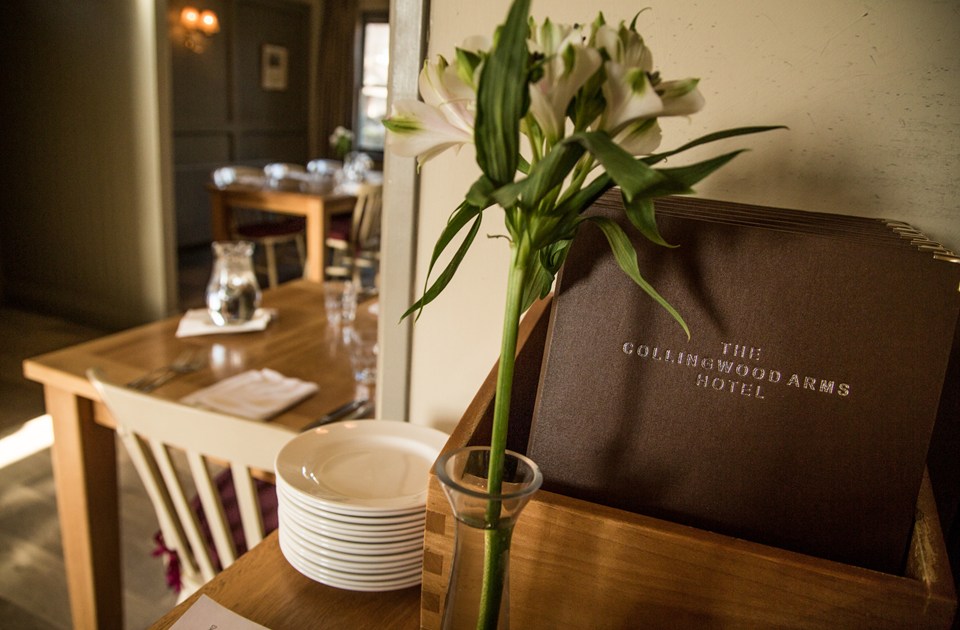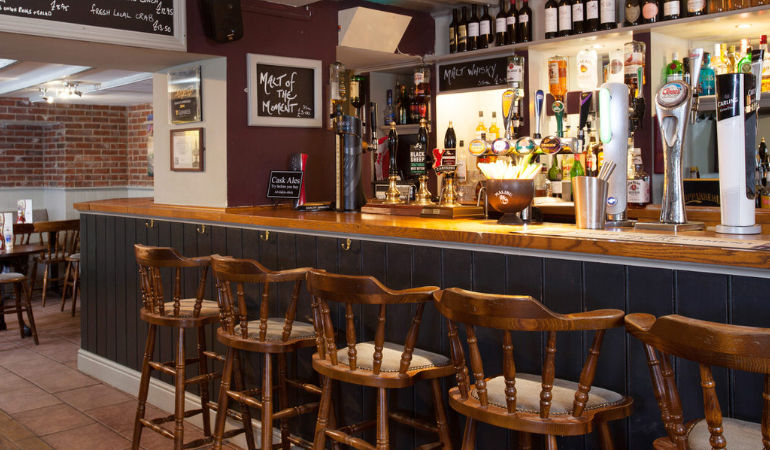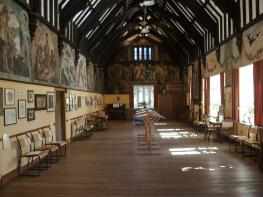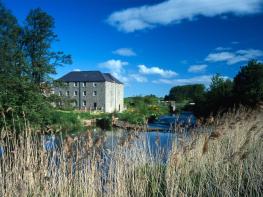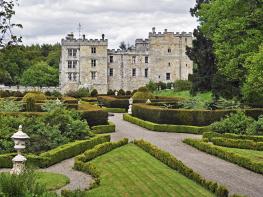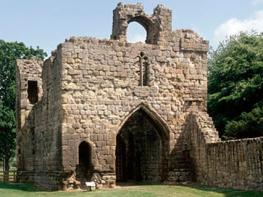In the village of Wooler, on the edge of Northumberland National Park, Whitsun View Cottage is a…
On Doddington Moor

4.5 miles (7.2kms)
About the walk
Routin Lynn, to the north, might be the largest example of prehistoric rock art in northern England, but many other locations are equally worthy of exploration. Nearby Doddington Moor has given up traces of man's presence as far back as the mesolithic or Middle Stone Age, when a warming climate attracted nomadic groups of hunter-gatherers. But it was the introduction of farming from around 4000 BC that brought settlement and, in time, the creation of enduring monuments.
Cup-and-ring carvings
Perhaps the most mysterious features are the so-called cup-and-ring marks that decorate many of the bouldery outcrops in Northumberland. They are not unique; there is a large concentration of similar carvings on the moors near Ilkley, and they appear widely elsewhere across Europe. Ascertaining a reliable date for them is difficult, although the practice is generally regarded as beginning during the late neolithic or New Stone Age period. They were made by pecking the rock with a stone tool and take the form of cup-like depressions and concentric circles. The patterns are sometimes linked with grooves that suggest channels to collect rainwater.
There are many carved rocks across Doddington Moor, but not all are easy to find. The most impressive stone is relatively simple to locate and lies near the high point of the hill. It shows numerous cup marks grouped within enclosing grooves, variously circular, rectilinear or even triangular in shape. Many interpretations have been put forward, suggesting ritual, writing, territorial marking or even mapping, the wandering channels perhaps representing rivers across the landscape. But it is all conjecture. The lack of firm understanding, however, unfetters the imagination in wondering how our ancestors viewed their world and what prompted such intricate patterning.
Bronze Age stone circles and Iron Age forts
Equally intriguing is the stone circle passed earlier in the walk. Five stones can be seen, only one of which remains standing. Two fallen stones are known to have been part of the circle, but the other two are thought to have been placed later, perhaps simply as gateposts. The circle was originally some 50ft (15m) in diameter and may be linked to the several Bronze Age burial cairns that dot the hill.
Iron Age peoples also settled upon Doddington Moor. The Ringses fort looks out to the west from a satellite hill to the north, while on Dod Law itself there are two banked enclosures overlooking the escarpment just west of the summit and close to the carved slab already mentioned. Excavation has shown that at least one of the forts remained occupied into the Roman period, when a north–south road, shown on maps as the Devil's Causeway, ran just to the east.
Walk directions
Follow the main road south through the village, turning off beside a Victorian cross along a lane to Wooler Golf Club. Where it subsequently turns up to the golf club, keep ahead through a gate and continue on a gravel track. After dipping past a barn, the way climbs again, passing through another gate as it crests the hill. Walk on past a conifer plantation then look for a signpost to Weetwood Hill, beside a gate on the right.
Swing right through a second gate into the corner of a field. Head across at a shallow angle from the left boundary, making for a stile by the distant far corner. Walk on, closing with a wall on the left to a second stile. Over to the right is the Iron Age hill-fort site of The Ringses, a trod leading out to it. The main route, however, continues ahead, shortly passing the end of a pine plantation. Keep going beside the left-hand wall, crossing another two stiles and on at the edge of heath until you reach a solitary standing stone, all that remains of the stone circle.
Walk forward past a gate and on down to the corner of the moorland enclosure. Ignore the gate ahead and instead swing right on a narrow path, now following a fence and shortly reaching a field gate on the left.
Again, don't pass through; instead bear away right on a broader trail to a fork. Take the right branch, but as it immediately splits again, keep ahead up the hillside. Where the track branches yet again a little higher up, fork left. The gradient soon eases and before too long the trail leads past the trig column crowning the hill. It is a grand viewpoint and looks out on the one hand to the Cheviot Hills, while in the other direction is the Northumberland coast. Carry on, gently losing height past a gate and stile to approach a junction of tracks near a gate onto the golf course. The cup-and-ring carved slab lies some 25yds (23m) before the junction, concealed among bracken just to the right of the path.
At the junction beyond the stone, go sharp left down to a lone cottage, the Shepherds House. As you pass (to the right), look for a narrow path leaving into the bracken on the right. It follows the edge of a steep escarpment, later descending towards the village, which then comes into view. Cross a fence stile, and continue down the hill, picking up a sparse line of wind-blown hawthorn, the remnants of an old hedge. Beyond a kissing gate, leave the bracken for open grass. Ignore a crossing path and bear right to find a waypost at the top of a gorse bank. Curving left, a narrow path winds through the gorse, dropping to a final stile onto the golf club lane. Follow it left back to the village.
Additional information
Lane and footpaths, 7 stiles
Heather and bracken heath
Dogs under control and on lead near livestock
Explorer 340 Holy Island & Bamburgh
Roadside parking in village off main road
None on route
WALKING IN SAFETY
Read our tips to look after yourself and the environment when following this walk.
Find out more
Also in the area
About the area
Discover Northumberland
If it’s history you’re after, there’s heaps of it in Northumberland. On Hadrian’s Wall you can imagine scarlet-cloaked Roman legionaries keeping watch for painted Pictish warriors while cursing the English weather and dreaming of home. Desolate battlefield sites and hulking fortresses such as Alnwick, Dunstanburgh, Bamburgh and Warkworth are reminders that this, until not so very long ago, was a contested border region. The ruins of Lindisfarne bear witness to the region’s early Christian history.
Northumberland also has some of Britain’s best beaches. On summer days, and even in winter, you’ll see surfers and other brave souls making the most of the coast. Inland, there are some great walks and bike rides in the dales of the Cheviot Hills and the Simonsides – just hilly enough to be interesting, without being brutally steep. There's dramatic scenery in the High Pennines, where waterfalls plunge into deep valleys, and there are swathes of heather-scented moorland. Northumberland National Park covers over 400 square miles of moorland and valleys with clear streams and pretty, stone-built villages. It’s just the place for wildlife watching too. You’ll find flocks of puffins, guillemots and other seabirds around the Farne Islands, and seals and dolphins offshore.
Nearby stays
Restaurants and Pubs
Nearby experiences
Recommended things to do
Why choose Rated Trips?
Your trusted guide to rated places across the UK
The best coverage
Discover more than 15,000 professionally rated places to stay, eat and visit from across the UK and Ireland.
Quality assured
Choose a place to stay safe in the knowledge that it has been expertly assessed by trained assessors.
Plan your next trip
Search by location or the type of place you're visiting to find your next ideal holiday experience.
Travel inspiration
Read our articles, city guides and recommended things to do for inspiration. We're here to help you explore the UK.

